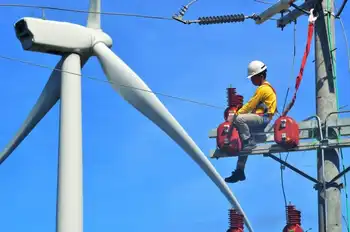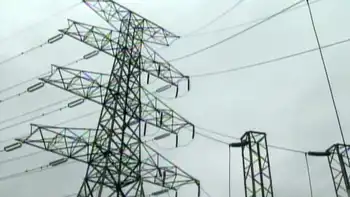Taking green buildings from concept to reality
By NDTV.com
High Voltage Maintenance Training Online
Our customized live online or in‑person group training can be delivered to your staff at your location.

- Live Online
- 12 hours Instructor-led
- Group Training Available
As the environmental impact of buildings becomes more apparent, a concept called green building is gaining momentum. Green or sustainable building is the practice of creating healthier and more resource-efficient models of construction, renovation, operation, maintenance, and demolition. Research and experience increasingly demonstrate that when buildings are designed and operated with their lifecycle impacts in mind, they can provide great environmental, economic, and social benefits.
Worth noticing is that most of us talk about energy consumption and pollution because of industry and transport when at least 40% of the total energy produced is consumed by buildings.
The construction industry in India is the largest sector after agriculture, contributing around 7 per cent of IndiaÂ’s GDP. The sector is forecast to grow at a rate of over 10 per cent per annum for the next five years, against the world average of 5.5 per cent. The development of Indian economy is creating demand for residential and non-residential construction, as consumers demand more houses, commercial spaces, shopping malls, hotels, other facilities and modern amenities. In property terms, this new demand translates into over 12 million homes, 600 shopping malls, 80 million square feet of offices and 200 townships, along with airports, hotels, hospitals and schools, all slated for construction by 2010.
Green buildings are steadily increasing their footprint in India with an increase from 6,000 sq m of green space in 2003 to 304,800 sq m expected by the end 2008. Today a variety of green building projects are coming up in the country — residential complexes, exhibition centers, hospitals, educational institutions, laboratories, IT parks, airports, government buildings and corporate offices.
India, which has an estimated 19 years for the domestic oil reserve to last and 86% of its oil consumption being imported, has taken a leading role in promoting green buildings coming close behind the U.S., Australia and Canada. Green buildings utilize designs and materials that are environment friendly. They ensure pollution-free environment and reduction in energy bills through application of smart energy management, building management, application of solar photovoltaic system, high performance windows and heat resistant paints among others.
It is estimated that 40 per cent of energy consumption in a building is on account of heating, ventilating, and air conditioning, or HVAC. Green buildings have provision for solar protection to prevent heat gain in the premises during the day. This helps in putting less of load on air-conditioning system to maintain ambient temperature within the premises.
Weather sensors help in optimizing the benefits offered by automated solar protection systems. In winters, the natural heat can be allowed in the premises using the same solar shades and for controlling them, depending on the sun effect and heat coming inside the building, thereby helping the heating system perform better. The downsizing of active temperature management systems (air conditioning and heating) in the green buildings reduces the overall building costs.
As per estimates, 76 per cent of the electricity generated by all power plants is consumed by buildings. And 35 percent of the energy consumed in a building is because of use of light in the daytime. So the big question is how to reduce the consumption of this energy?
The simple answer to this question is the solar protection mechanism in green building. It ensures the usage of natural light to the maximum and that results in the reduction in the consumption of electricity used for lighting. It helps in curbing the recurring energy consumption costs like lightning by the use of natural lights.
Indian climate provides us natural light for quite a longer duration and if the luminosity coming in can be controlled, then this will be a huge source for energy. This mechanism also protects the premises from the glare and heat of harsh Sun in the summers and maintains the warmth of the sun during the winters. This helps in the increase in the comfort level of users as it enables natural ventilation, natural light and also climate control in a natural way. So, the overall experience in such buildings is quite soothing.
The Indian Green Building Council (IGBC) estimates the demand for green building materials and equipment will reach $4 billion per annum by 2010. Going green is the latest trend among corporate. Green building, as the concept is called, ensures environment protection, water conservation, energy efficiency, use of recycled products and renewable energy. In tune with global trend to protect the environment, the number of green building projects in India is expected to go up from the current 164 to over 2,000 by 2012, industry experts feel.
A two pronged strategy can be considered. One, to make sure that the “trend” doesn’t become a marketing buzz but a real step to be taken by construction equipments suppliers, developers/ builders, architects/interior designers. Second, to educate end users in a way that they are responsible towards next generations.
Although the initial investment will be 4-5 per cent costlier than the traditional buildings, in the long run, the return on investment will be very high. Indian developers are realizing this fast and the interest level is increasing.
The main interest is that maybe with intelligent systems and controls, we can manage the environmental constraints favourably to save and reduce energy consumption.











